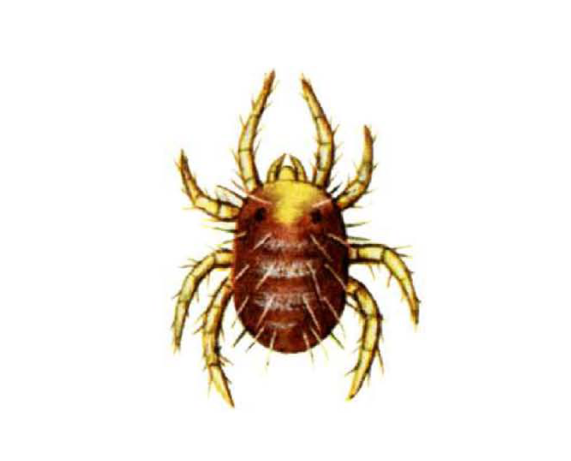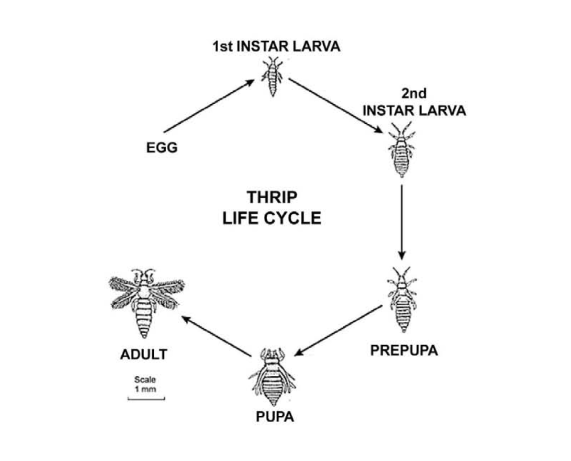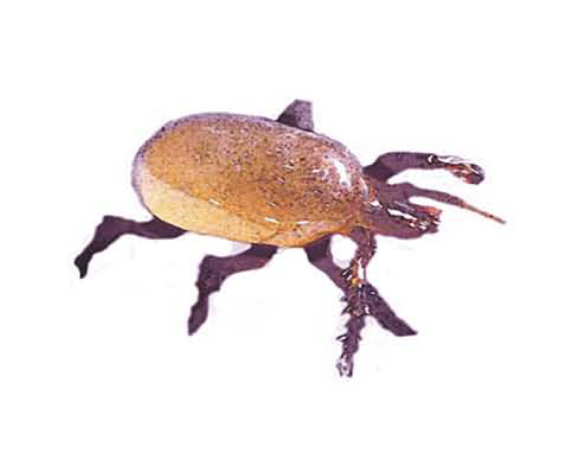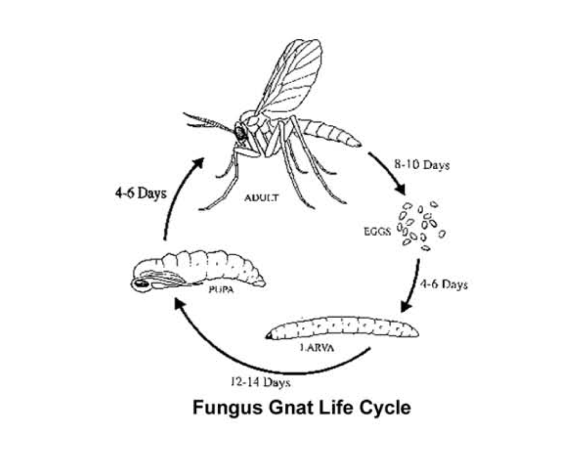Predatory Insects are a great all natural way to fight common greenhouse pests.Due to a short lifespan in the shipping box, all insects are available in store only.
-

Phytoseiulus Persimilis (to fight spider mites)
-

Amblyseius Cucumeris (to fight thrips)
-

Hypoaspis Miles (to fight fungus gnats)

Phytoseiulus Persimilis
Phytoseiulus persimilis is a shiny, red, pear-shaped predatory mite [0.4 mm-1/50 in] with long legs.Persimilis moves faster than spider mites so is an effective control. The eggs of persimilis are oval and twice as big as spider mite eggs. Larvae and nymphs are pale pink to light red.
The nymphs and adults feed on all stages of the spider mite. P. persimilis is delivered in a bottle with vermiculite, or on bean leaves with 2,000 adults and nymphs.
Apply bean leaves to the upper cancopy of plants distributing evenly, sprinkle thevermiculite on the infected plants, try to distribute them as evenly as possible. Introduce the beneficials as soon as possible after receipt, if storage is neccesary, keep them at 46-50° F.
Adult P. persimillis eat from 5-10 Adults or 20 eggs per day, they reproduce more quickly than the spider mites at temperatures above 28°C (82°F), and they feed on all stages of the twospotted spider mite.P. persimilis are very voracious. They have the highest consumption rate of all phytoseiids. However, they absolutely must have spider mite prey or they will disperse and/or starve.
- Preventative: 1-2 per square foot - every 1-2 weeks
- Curative: 1-2 per infected leaf - every week

Tetranychus uricae "Two-Spotted" or "Red Spider Mite" The two-spoted spider mite or red spider mite is a major pest in vegetables, tropicals, and other ornamentals. It's tiny size makes it difficult to see. They prefer to feed from the bottom side of leaves located in the tops of plant, feeding marks can be found along the main vein of leaves near the petiole. As populations increase, plant damage spreads across the leaves.

Amblyseius Cucumeris
This tiny tan colored mite forages on the leaves of plants and eats the small thrips larvae. These predators work best when applied early to prevent thrips numbers from increasing.
A. cucumeris is packaged in a granular bran mixture in 1 litre tube, or 3 litre pails. To apply bulk mix, mist leaves lightly and sprinkle directly on leaves or place in small pile, 1/2 to 1 teaspoon per plant directly on soil or rock wool blocks. A. cucumeris is packaged at 50,000 per litre.

- Preventative: 5 per square foot - every 1-2 weeks
- Curative: 10 per square foot -every week
- Thrips: Thrips are very small (1.25-mm or less), fringe winged, and yellowish brown to amber with an orange thorax. The male is slightly smaller and lighter in color than the female.
- Symptoms: plant injury is caused by both nymphs and adults raspimg the bud, flower and leaf tissues of the host plants, and then sucking the exuding sap. This causes distorted and discolored flowers or buds and gray or silvery, speckled areas on the leaves. Thrips reproduce throughout the year with the majority of their 12 to 15 generations occurring during the warmer months. Newly emerged females begin to lay eggs within 1 to 4 days

Hypoaspis Miles
hypoaspis miles are a fairly large predatory mite that target fungus gnats in the soil. Hypoaspis miles can consume up to 8 small fungus gants per day.
These predatory mites establish themselves in the soil in various root environments and other growing media, including potting compost and rock wool.
They are especially fond of dark, damp places and are not highly tolerant of dry conditions. Hypoaspis miles can move quite rapidly, and the depth at which they are found in the soil depends on humidity, type and how compact it is.
The body and legs of this mite are brown, whilst the jaws are darker brown. The females are larger than the males and can be as long as 1 mm, and have a visible white stripe on the terminal body segment. The eggs, larvae and first nymph stages are white, with nymphs becoming light brown as they age.Hypoasips miles have a long lifespan and can survive for some time without food. Adults can survive 3-4 weeks without food, and much longer if they have fed adequately beforehand.However in the absence of food, egg-laying ceases.

It can possibly take serval weeks (depending on the Introduction rate) until the Hypoaspis is established in the soil.
- Fungus Gnats - Adults are small dark files with long, slender antennae and long legs. Damage to plants is caused by the long and translucent white larva, which has a distinctive black head. Larvae feed on dead material in the growing media and also on living material such as roots and stalk tissue. Damaged plant tissues are then susceptible to plant diseases such as Pythium, Phytophthora, Fusarium, and Verticillium.




